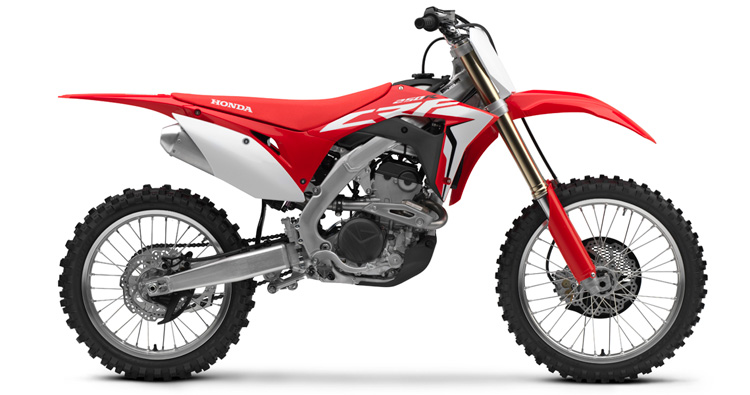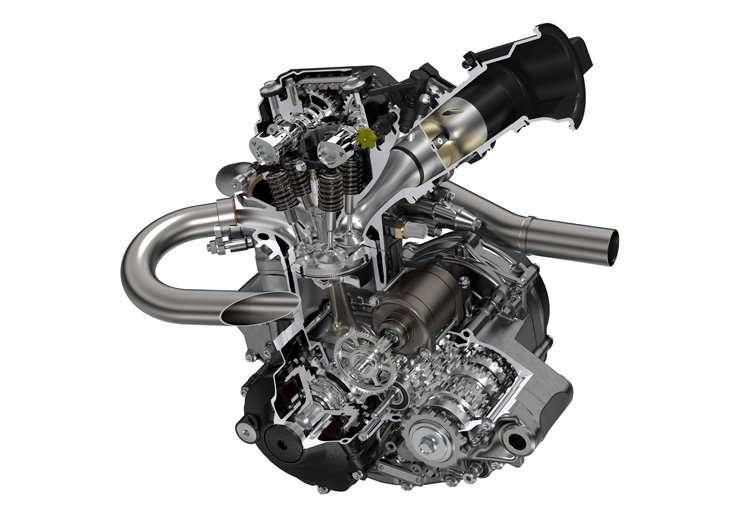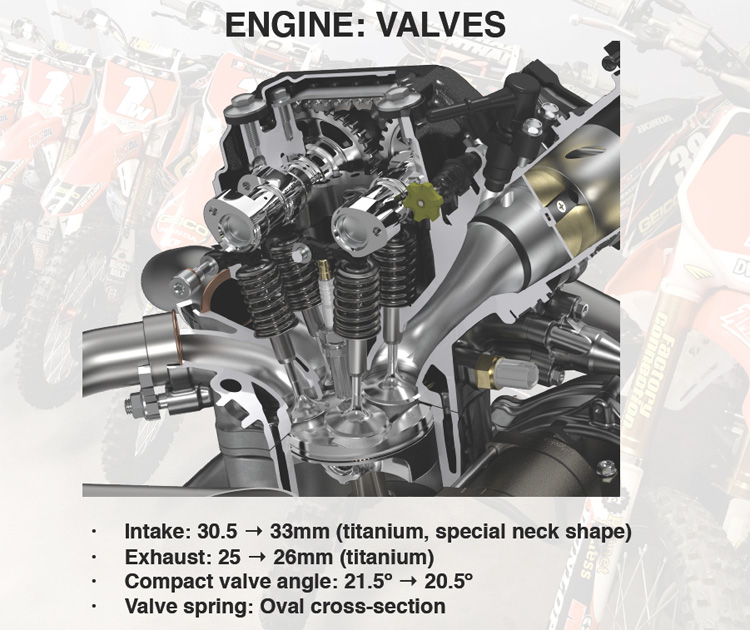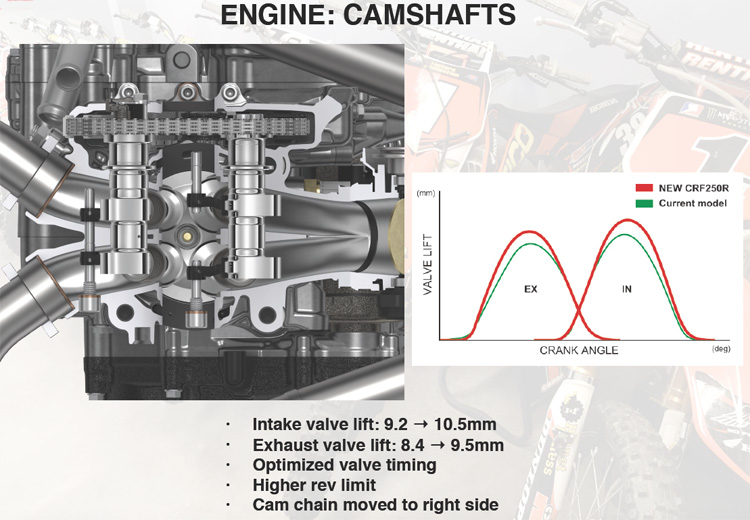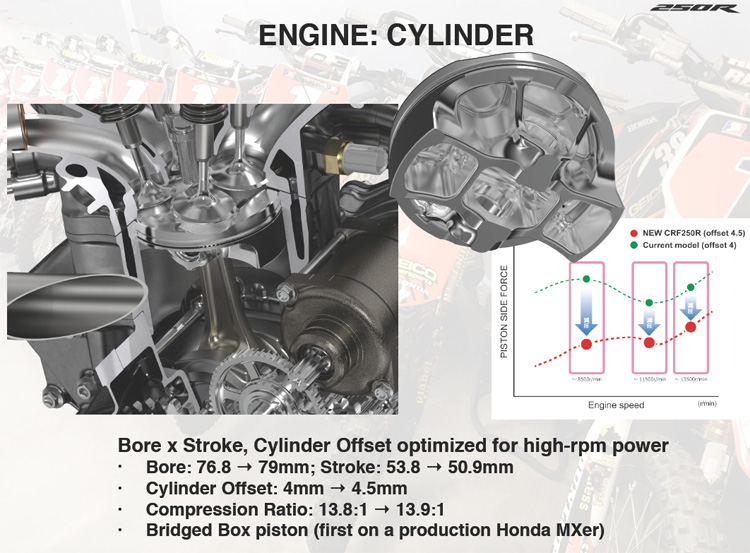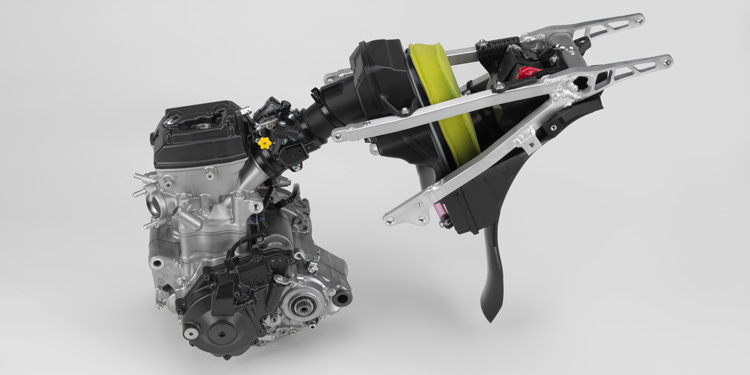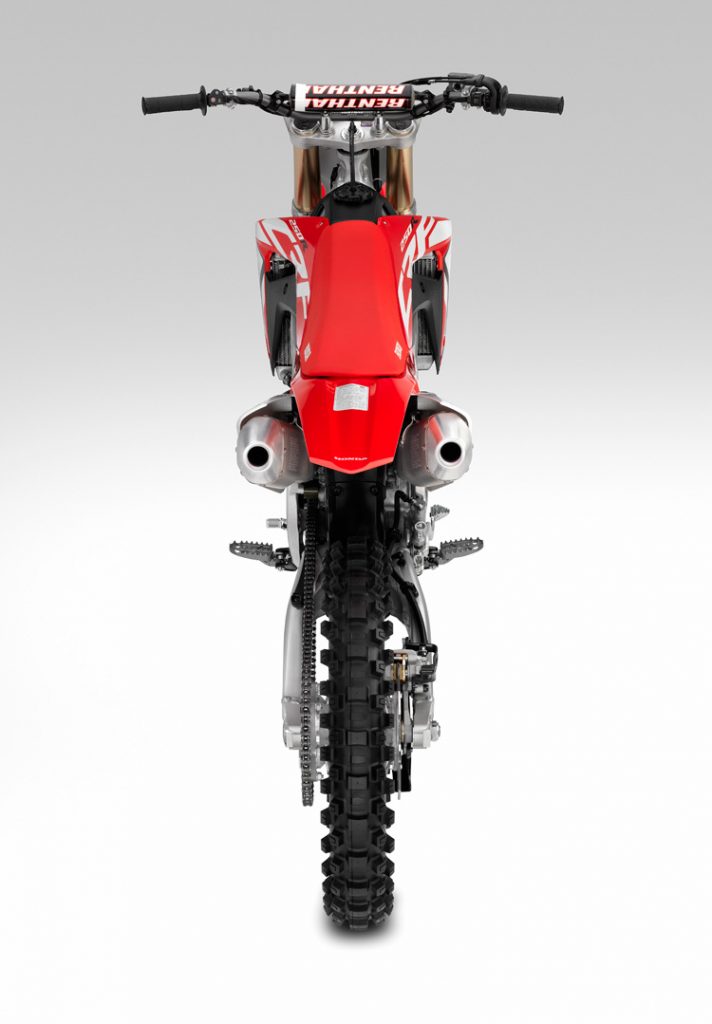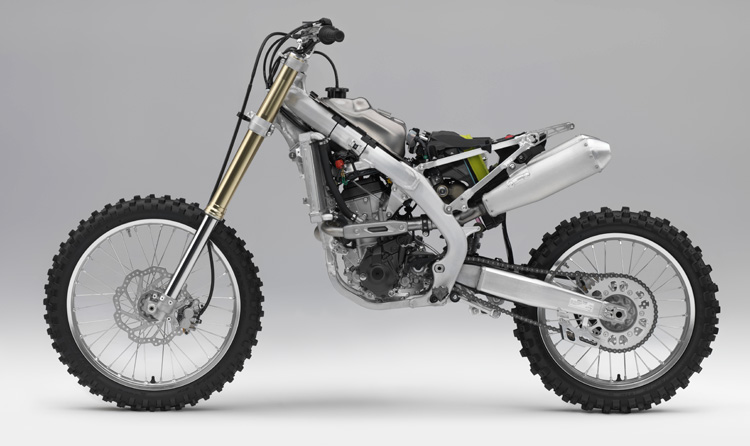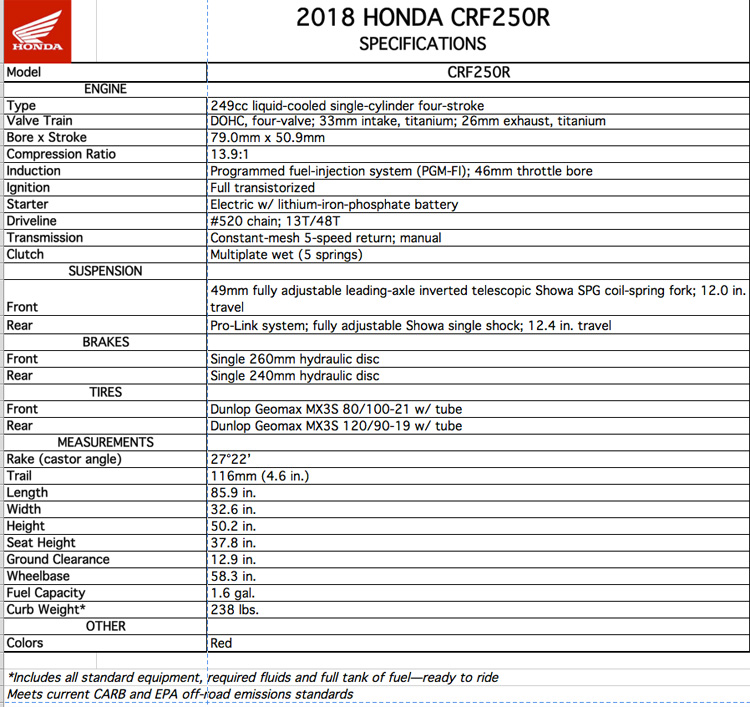WOW: 2018 Honda CRF250R
Just when you think all new moto technology first makes its way into the 450 classes, Honda goes full tilt and unveils a very radical 2018 250F. What this new bike looks like is not breaking news, we had already posted several images from versions of this motorcycle that had been raced in Japan. We did some research and speculated on some of the technology; some was on track, some was off.
As it turns out, this twin-cam finger follower rocker dual exhaust port engine takes a lot of its tech from Honda’s MotoGP Moto3 class engine, not the HRC Rally 450 engine that we first figured. This engine should be a screamer if some of the charts we were shown are accurate. It’s going to be a higher revving and higher horsepower engine compared to what they had in the past. By a long shot, but only in the upper RPM range south of 9000. In Moto 3 the engines are limited to 13,500 RPM by a controlled ECU and Honda GP riders have praised the power of their bikes up top–so making the power up there is not an issue. In fact they have been accused of cheating that rev limit though it would be difficult with a provided ECU. Making the rest of the spread work for motocross, especially lower level riders, will be the challenge. But if the past is any indication, the broad low to mid-range torque was not as appreciated as the need to be able to produce more overall power. Especially in racing applications where the Uni-Cam engine was at its max.
There is nothing carried over from the older 250R engine. First off, the 250F from Honda is now E start only, a trend that is becoming commonplace. From there, the head is twin-cam with the cam chain and gears on the right side of the engine. The cams do not ride directly on top of the valves, yet are separated by a finger follower between the two components as seen in the image. This tech allows for greater lift for both the intake and exhaust sides, optimizes valve timing, and produces a higher overall revving engine. The valves are full titanium with a new neck shape and have increased in diameter, 2.5mm on the intake and 1mm for the exhaust. Valve angle has also been adjusted, as well as the valve spring oval cross-section.
The bore and stroke of this engine is another pretty radical change. The cylinder has been offset an additional .5mm with a total of 4.5mm compared to the crank. The bore has gone from 76.8mm to 79mm and the stroke from 53.8mm down to 50.9mm. Larger bore, shorter stroke equals higher power with RPM. Compression ratio is upped slightly to 13.9:1 and Honda is now using a bridged box piston design—a first for them. The crank also has been slimmed down by 350 grams.
The oiling and internal lubrication system is similar to the 450R, creating a negative crankcase pressure for minimal pumping pressure loss in power at higher RPMs. The oil path is shorter and there is a new piston oil jet with more holes for a better spray at the bottom of the piston.
The clutch has new materials with eight plates, one being for the judder spring. There are also two different friction plate materials in the clutch as well. And like most all-new engines, the transmission has been updated to be lighter and offers new ratio to optimize the new power plant.
Like we noted above, this 250F is sans any form of kick starter—it’s all electric all the time. Compact in design with a lightweight battery.
Like its brother the 450R, the 250R also has three different programmed ignition maps available on the fly, or at least with the engine running—standard, smooth, and aggressive. The aggressive and smooth maps can also be reprogrammed.
The exhaust layout is also very radical. Since the exhaust ports are separate, the exhaust is as well. This is an honest-to-goodness dual-exhaust system. This is the first 250F with totally separate exhaust from the port to the tip of the muffler. Dual-exhaust ports on four-stroke dirt bikes is not new tech and was used to get larger displacement thumpers to rev farther and more free. Husqvarna produced MXers with totally separate exhaust all the way out to the back in the 90s. Honda used to have totally dual exhaust on their XR600R Baja race bikes back in the day with Johnny Campbell. Having experienced this bike (and others with dual headers and exhaust ports) we can attest to the different top-end power character just this exhaust system could make. In the past, dual-exhaust port four-strokes often had a two-into-one collector and a single muffler likely for simplicity and cost.
The headers on each side of the ’18 250R are not the same; one side has a resonator chamber while the left side does not. Honda said this is for sound and also for power feel. They have tested two chambers but found the best performance with just one. The mufflers are very long looking on this bike and we will have to wait to see what they sound like and what they actually weigh. But now if you want an aftermarket exhaust, you pretty much are going to have to buy two complete exhausts for one motorcycle. We are sure some aftermarket will figure a way to make it into a single (conventional) system. If you want full titanium dual to save a little weight, it might set you back 2 grand or very close to that mark. Hopefully, the stock exhaust is so good you really never have to replace them.
As for the chassis, Honda is utilizing the same designs and changes as what the CRF450R received in 2017. In fact, the frame and chassis are the same as the 450R except for the bottom cradle to house the engine. Many of the 450R parts will carry over to the 250R including plastics, suspension, swingarm, linkage, airbox, fuel tank, and so on. The new 250R gets the same downdraft air intake as the 450R for optimized airflow.
The frame geometry is the same as the 450R including a longer frame from the last generation, which also happens to be the 7th generation. The newer frame is 340 grams lighter, which is about 12 ounces for our Yankee non-metric brains. The 250R also received cool components like the titanium fuel tank off the 450R.
Suspension is also breaking some new ground again for Honda. The 2018 CRF250R is going down the road of the 450R with the Showa kit-copy 49mm spring fork. For many years, that we recall, Honda has always switched up brands of suspension from the 250 to the 450 between Showa and Kayaba. Meaning one model would run Showa while the other always ran Kayaba. The shock is the same as the 450R but slightly shorter. And, yes, the internal settings and spring rates are not the same as the 450R; the 250R has its own.
The basic platform for the 2018 CRF250R kind of starts out the same as the current CRF450R. From there, the engine is a radical new design with tech from MotoGP and it looks like it could be a high-revving powerhouse (that is, in theory; we will know more when DBT rides it). Motocross bikes are not cheap and neither is cutting-edge tech with FI, electric start, and computer controls built in. More and more manufacturers are able to share chassis or major components of chassis on several displacement models and it looks like Honda is doing the same. The only component we wish Honda would have worked on would be a hand-held or some sort of easier to use and get engine management system like Yamaha has done with the 2018 YZ450F. Honda does have a fuel and ignition management system but it requires a bulky laptop and special software. People have been drooling over the first photos of this bike when it was spotted racing in Japan. Now it is really here, or almost here. It looks like Honda has done the work and utilized technology that has already been proven so we bet the 2018 CRF250R could be a contender.
And for the off-road crowd looking for an RX, Honda would not comment if there will be a production version just yet. But poking around we learned that you could put all of the RX specific parts onto this bike if you replace one radiator hose for gas tank clearance.
Help support our site by shopping here
